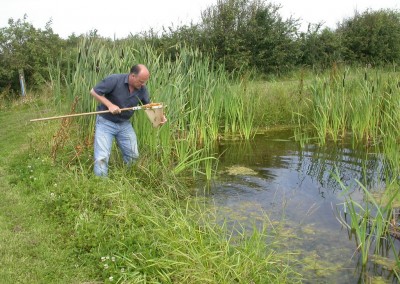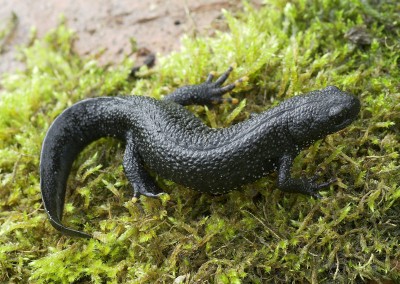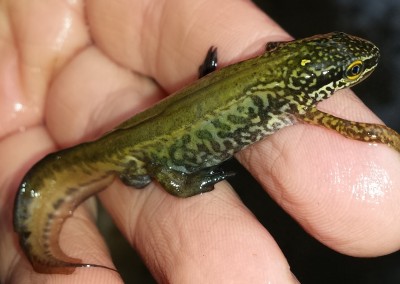Survey
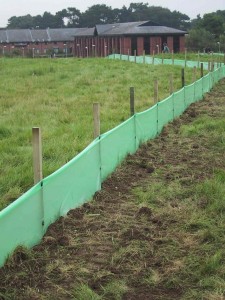 The great crested newt is the largest of the three newt species native to the UK. They’re also known as warty newts.
The great crested newt is the largest of the three newt species native to the UK. They’re also known as warty newts.
Males have a large jagged crest along their backs, which is present only during the breeding season and is most obvious when the animal is in the water. Females don’t have the crest.
Like all amphibians, great crested newts need water to breed, and adults may inhabit the breeding pond for several weeks. For the rest of the year, great crested newts live on land, favouring damp habitats, grassland and woodland where there is suitable daytime cover (they are nocturnal) and plenty of food, usually within 250m of the breeding pond. They are carnivorous and will eat aquatic and terrestrial invertebrates as well as smaller newts and tadpoles.
Female great crested newts lay eggs singly on plant leaves or other suitable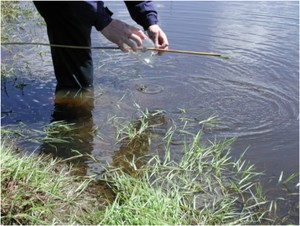 substrates, which they wrap around each egg and stick together with a glue-like excretion. The population of great crested newts has suffered a huge decline over the last century, largely as a result of the loss of wetlands and habitat fragmentation. The UK now has the most significant remnant population in Europe, although the transmission of a fungal disease amongst amphibians is a current threat.
substrates, which they wrap around each egg and stick together with a glue-like excretion. The population of great crested newts has suffered a huge decline over the last century, largely as a result of the loss of wetlands and habitat fragmentation. The UK now has the most significant remnant population in Europe, although the transmission of a fungal disease amongst amphibians is a current threat.
Great crested newts are heavily protected by UK and European legislation.
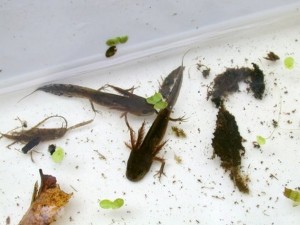 The main great crested newt survey season is mid-March to mid-June. Surveys to detect the presence of the species are carried out at breeding ponds, and methods include torch surveys, bottle trapping, egg searches and larval netting. Torch surveys and bottle trapping are carried out at night, when the newts are active. Egg searches and larval netting are usually done during the day.
The main great crested newt survey season is mid-March to mid-June. Surveys to detect the presence of the species are carried out at breeding ponds, and methods include torch surveys, bottle trapping, egg searches and larval netting. Torch surveys and bottle trapping are carried out at night, when the newts are active. Egg searches and larval netting are usually done during the day.
Four survey visits are implemented, two of them between mid-April and mid-May. If great crested newts are found and a Natural England development licence is required, a further two survey visits are necessary to produce a population size class assessment.
Surveys can only be carried out by a licensed person.
Legislation
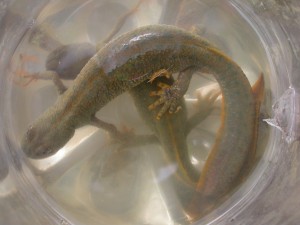 Great crested newts are listed under Schedule 5 of the Wildlife and Countryside Act 1981 (as amended) which affords them protection under Section 9.
Great crested newts are listed under Schedule 5 of the Wildlife and Countryside Act 1981 (as amended) which affords them protection under Section 9.
The Act makes it an offence to:
- intentionally kill, injure, take, possess or trade in great crested newts;
- interfere with places used for shelter or protection or intentionally disturb animals occupying such places;
The great crested newt is also listed in Annexes ll and IV of the European Habitats Directive 1992 (EC Directive 92/43/EEC on the Conservation of Natural Habitats and Wild Fauna and Flora). In the UK the Directive has been transposed into national laws by means of the Conservation of Habitats and Species Regulations 2017. Under this legislation a person commits an offence if they:
- deliberately capture, injure or kill great crested newts;
- deliberately disturb great crested newts in such a way as to be likely significantly to affect the ability of any significant group of animals of that species to survive, breed or rear or nurture their young, the local distribution or abundance of that species;
- damage or destroy a breeding site or resting place.
The great crested newt is also listed in the Bern convention; Appendix ll, and is listed as a Species of Principal Importance under the NERC Act.
Click here to read more about great crested newts and the law

